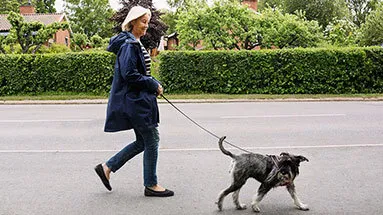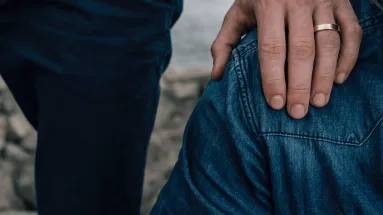Learning about different types of cancer treatments
Learning about different types of cancer treatments

Deciding on a cancer treatment plan can get harder as you get older. Everyone can face challenges based on their own health needs. It’s important to know and understand your treatment options to make well-informed decisions.
Existing health issues and daily life activities
Many older people with cancer have other health issues. These can include high blood pressure, arthritis or diabetes. It’s important to consider how other health issues may affect your cancer treatment plans.
It’s also important to know how treatment might affect your daily life. Your treatment could affect everything from driving to more basic activities like getting ready for the day. Make sure you understand how each treatment option could affect these areas of your life before you choose a plan.
Using existing health issues as a guide
Our chances of developing health issues increase as we age. Your current health status and any previous health issues should be factored into your treatment plan. That’s why it’s important for your doctor and care team to understand all of your health issues.
To make sure your treatment plan is right for you, be ready to ask questions. If one hasn’t been offered already, ask your doctor for a “Comprehensive Geriatric Assessment”. This can be a helpful tool for doctors to determine what kinds of treatment will work for you, keeping your other health issues in mind. More information about a comprehensive geriatric assessment is available here.
Knowledge is key to understanding your options. We’ve provided a list of common treatments and complementary therapies to discuss with your care team. These complementary therapies may help you deal with side effects of your treatment. You can bring this Treatment Discussion Guide to your next doctor’s appointment to help discuss the appropriate plan for you.
Types of cancer treatments
Before your next doctor’s appointment, it may be helpful for you to understand the most common cancer treatments. You can have one type of treatment or a combination. Some of the most common types of treatment for cancer include:
- Surgery—When a doctor uses tools to remove cancer from inside your body.
- Chemotherapy—A medication, typically a fluid delivered into a vein, that attacks and stops cancer cells from growing. It can also kill some healthy cells, which is why people may experience side effects, like hair loss, tiredness and throwing up.
- Radiation—Radiation uses high-energy rays to attack the cancer cells and shrink tumors.
- Targeted treatment—A treatment that uses drugs or other substances to identify and attack specific types of cancer cells to try to minimize harm to normal cells. It can also block how cancer cells grow and spread. Some of these medications are taken by mouth and some are given through a needle in a blood vein.
- Immunotherapy—A therapy that boosts your body’s own immune system to fight cancer.
- CAR T-cell therapy—A treatment that boosts your immune system’s cells (specifically cells known as T-cells) to help fight cancer. This process involves removing T-cells from your body, training them to recognize and attack cancer cells and then adding them back into your body to fight off the cancer.
- Clinical trials—Studies where eligible volunteers take part in experiments for new medicines or procedures. Some clinical trials enroll healthy volunteers and some trials enroll patients who have the type of cancer being studied. For some cancer patients, a clinical trial may be a way to gain access to the newest ideas in cancer treatment.
Complementary therapies
Complementary therapies are not the same as cancer treatments approved by the U.S. Food and Drug Administration. They may be used along with standard medical treatments to potentially provide comfort and help ease some side effects. Discuss with your doctor before adding any complementary therapies to your standard treatment. Some examples include:
- Acupuncture—This therapy involves a professional inserting thin needles through the skin at specific points on the body. This may help reduce pain and nausea caused by other treatments.
- Meditation—It may help reduce stress and anxiety. There are many different types of meditation. Some involve deep breathing or focusing on a phrase or object. Meditation can be done alone or with a teacher. There are free meditation videos on YouTube and apps you can download on your smartphone to help.
- Aromatherapy—This involves the use of scented oils to help you relax. These oils can be put on your skin, used in bath water or heated to release a nice smell in the air. These oils may help relieve nausea, pain and stress.
- Hypnosis—By working with a therapist, hypnosis may help you relax and reach a deep state of concentration. The therapist may help you focus on controlling your pain and reducing stress.
- Palliative (supportive) care—This type of care can improve how you feel and reduce pain for patients with a serious disease. It’s often given at the same time as cancer treatment to help relieve symptoms, pain and stress. Palliative care can be utilized at any point during cancer treatment.
- Gentle yoga—Yoga may help improve your energy when you’re feeling tired from cancer treatment. Talk to your doctor to see if this activity may be right for you.
- Counseling—Increased stress and anxiety are common with a cancer diagnosis. Speaking with a mental health professional can help you work through emotional challenges in a healthy way. Be sure to ask your treatment team for services to start the process.
Talking openly helps you and your healthcare team make the right treatment choices for you. Think about bringing this Treatment Discussion Guide with you to your next appointment. If you have a caregiver, be sure to bring him or her to the appointment to help take notes.













